





















s a longtime Horizon Ag customer and seed producer, Prairie County, Arkansas Farm Manager Darren Walker has seen a lot of good-yielding pure-line varieties introduced, only to be replaced by a better-yielding variety every few years.
The two newest Clearfield® long grain varieties from Horizon — CLL18 and CLL19 — have exceeded those expectations, however, with both earning their place in Walker’s Wingmead Farms operation.
Since CLL18 was developed in the University of Arkansas rice breeding program and there was a lot of excitement about how it had performed in tests, Walker expected that it would be a solid variety in the state. What he didn’t know was that it would end up being the top-yielding variety on his farm.
“I’ve been planting Horizon Ag varieties for approximately 20 years and have been growing seed production for the last nine years, and I’ve got to say CLL18 raised the bar for Horizon Ag,” said Walker. “Yield-wise, CLL18 is superior to any Horizon Ag variety we have grown. It also seems to perform well across a wide range of soil types and seeding rates.”
Up until the last two seasons, Clearfield variety CLL16 had consistently been the top-yielding variety for Wingmead Farms. That changed when Walker planted CLL18 for the first time in 2023, and it beat the next closest yielding variety by 10 bushels an acre.
In 2024, CLL18 averaged 204 bushels per acre on Wingmead Farms. And increased yield potential is only part of the story, he says.
“CLL18 is a very robust variety that offers excellent harvestability,” said Walker. “We planted some of it in row rice this year and saw very good performance. I think farmers should give it a look in their row rice programs.”


Since the variety doesn’t have the level of blast resistance common in some newer Clearfield varieties like CLL16 and CLL19, he recommends growers take the threat of disease into account with their management strategy and field selection. “We didn’t have any rotten neck or panicle blast this past season, but that can change from year to year. Growers may need a fungicide to control blast and maintain CLL18’s top-end potential.”
With rice growers facing another year of economic challenges in 2025, Walker adds that a high-yielding pure-line variety like CLL18 may be particularly attractive compared to hybrid rice when it comes to managing the bottom line.
A semi-dwarf Clearfield variety developed by the LSU AgCenter breeding program, CLL19 was impressive in its first year of production on Wingmead Farms, providing high-yield potential, blast resistance and the advantages of planting an early-maturing variety to spread out planting and harvest timing.
“We really like what we saw with CLL19,” said Walker. “With its short stature, it stands well and has good stem strength. It has a big, showy head and really looks the part of a high-yielding variety. The high headset on CLL19 makes it more combine-friendly. And it yielded well, averaging 195 bushels per acre on the farm last year.”


“I would strongly recommend CLL18 this season, due to its reduced cost [compared to hybrid seed] and its excellent yield potential.”
Another plus is that CLL19 has industry-leading blast resistance with the Pi-ta and Pi-km genes, he says, although growers will want to monitor for other threats like sheath blight. Walker made one fungicide application last season “for sheath blight and kernel smut and we didn’t have problems with either disease.”
Although Wingmead Farms is too far north to grow a ratoon crop of CLL19 like growers can do in the coastal regions of Louisiana and Texas, he says the early maturity of the variety is still an advantage.
“I like to plant a very early-maturing variety like CLL19 in conjunction with varieties like CLL18, which is a little later maturing, and CLL16 which has the flexibility to be planted later,” explained Walker. “I can start with CLL19, then plant CLL18 followed by CLL16 and spread out our planting and harvesting.”




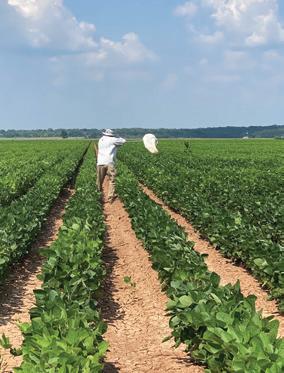
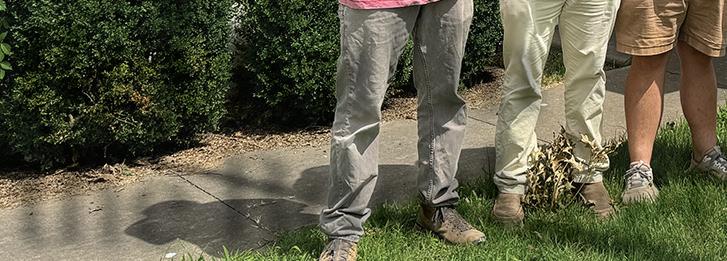
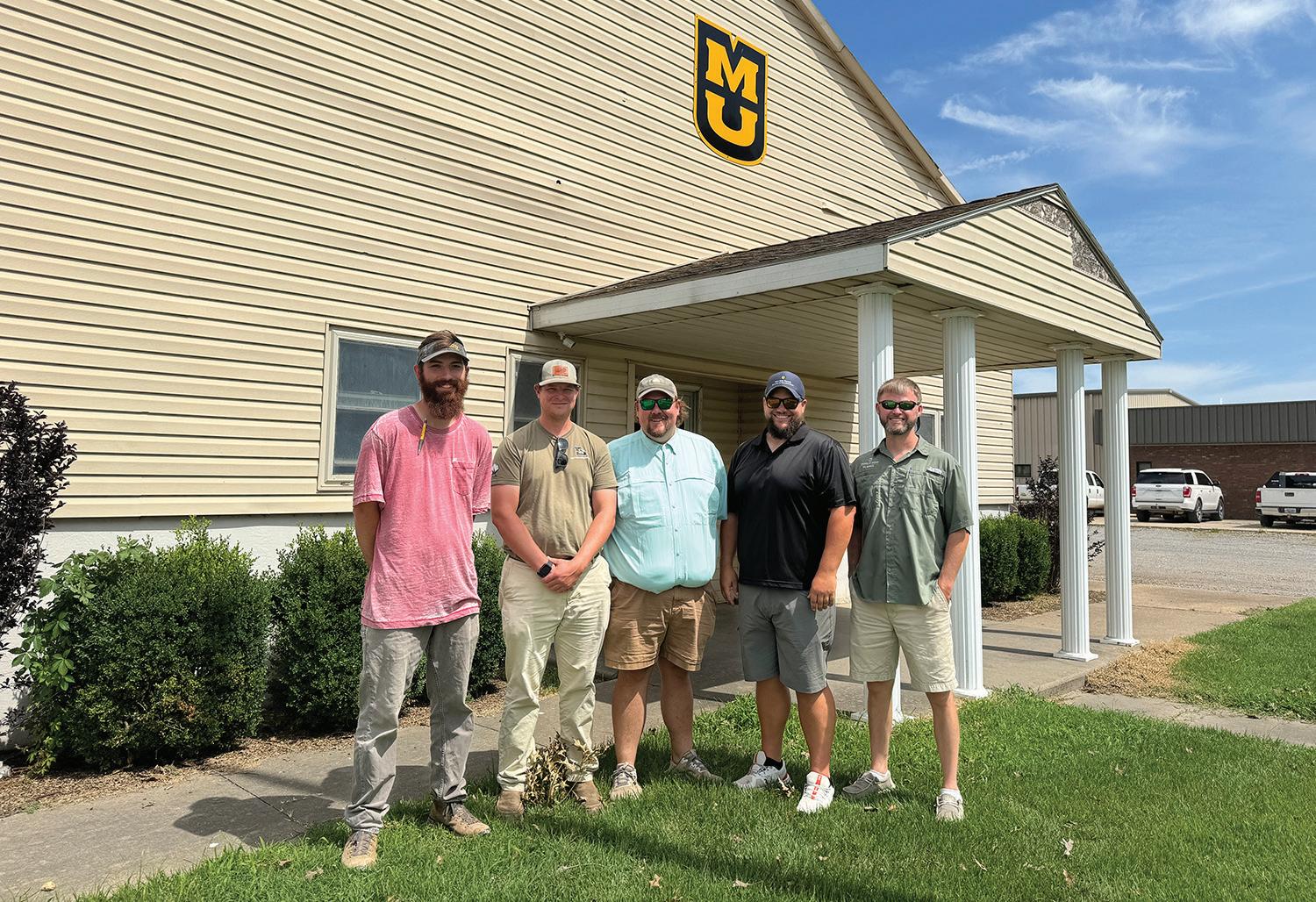








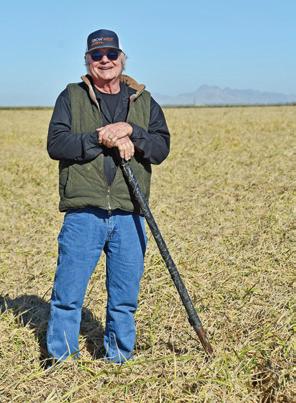

















I just finished the third of nine sessions of the Governor Dolph briscoe, Jr. Texas agricultural Lifetime Leadership program, known more commonly as “TaLL.” This two-year program is administered by the Texas a&M agriLife extension Service and has been a phenomenal outlet to be exposed to agricultural policies, markets, trade, labor, water, and other environmental issues in our industry.
One of the biggest points emphasized recently in austin and Sonora, Texas, was the importance of telling your story. There are several examples in this month’s edition of people willing to share their story on behalf of the industry, and I think it’s a great reminder for all of us to be just as vocal.

Cassidy Nemec Editor
In this month’s uSa rice column, Jamison Cruce, vice president for government affairs at uSa rice, relays both the appreciation for the american relief act of 2025 and the hope for a new, relevant Farm bill: “While this assistance comes as a great relief and is certainly appreciated, it is no substitute for a new Farm Bill with meaningful improvements to the farm safety net, including an adequate increase in the Price Loss Coverage program rice reference price — one that reflects accurate production costs and market conditions, enacted as early as possible to provide rice farmers with long-term certainty and security.”
Pages 16 and 17 house an article from the university of arkansas System Division of agriculture detailing research on nighttime stress in rice that shares recent discoveries into this concept that will hopefully influence further research: “Vibha Srivastava, professor of plant biotechnology in the crop, soil, and environmental sciences department for the University of Arkansas System Division of Agriculture, said the genetic mechanisms of high nighttime stress susceptibility are not clear, but they know that an elevated respiration rate during high nighttime temperatures diverts energy from growth to repair and impacts the formation of biomass.”
This month’s cover story features the Fisher Delta research, extension, and education Center in Portageville, Missouri. Dr. Justin Chlapecka, former state extension rice specialist for Missouri, detailed some of the work they did in rice and research efforts in the state. His hard work at the center can be read about on pages eight through 10.
rounding out a fun lineup for the month, Chalpecka’s wife robyn, new Horizon ag district field representative for Northeast arkansas and Missouri, can be found in this month’s My Turn column sharing her incredible rice story.
It has been said by many in the ag industry that if you aren’t willing to tell and share your story, someone else will. I think this should push us to get out of our comfort zone and do what we can in order to both hold tight to and progress the industry we love so much. because others looking from the outside might change it to suit their own vision of ag if we don’t.
Editor Cassidy Nemec cnemec@onegrower.com
Copy Editor Carroll Smith csmith@onegrower.com
Digital Content Editor Katie Guthrie kguthrie@onegrower.com
Art Director Ashley Kumpe akumpe@onegrower.com
ADMINISTRATION
Publisher/Vice President Lia Guthrie 901-497-3689 lguthrie@onegrower.com
Associate Publisher/Editor-In-Chief Carroll Smith 901-326-4443 csmith@onegrower.com
Associate Publisher/Sales Manager Scott Emerson 386-462-1532 semerson@onegrower.com
Production Manager David Boyd dboyd@onegrower.com
Audience Services Kate Thomas 847-559-7514
For subscription changes or change of address, call 847-559-7578 or email ricefarming@omeda.com.
ONE GROWER PUBLISHING, LLC
Mike Lamensdorf President/Treasurer Lia Guthrie Publisher/Vice President
ASSOCIATED PUBLICATIONS — One Grower Publishing LLC also publishes COTTON FARMING, THE PEANUT GROWER, SOYBEAN SOUTH and CORN SOUTH magazines. RICE FARMING (ISSN 0194-0929) is published monthly January through May, and December, by One Grower Publishing LLC, 875 W. Poplar Ave., Suite 23, Box 305, Collierville, TN 38017. POSTMASTER: Send address changes to OMEDA COMMUNICATIONS, CUSTOMER SERVICE DEPARTMENT, P.O. BOX 1388, NORTHBROOK, IL 60065-1388. Annual subscriptions are $25.00. International rates are $55.00 Canada/Mexico, $90.00 all other countries for Air-Speeded Delivery. (Surface delivery not available due to problems in reliability.) $5.00 single copy.
All statements, including product claims, are those of the person or organization making the statement or claim. The publisher does not adopt any such statement or claims as its own and any such statement or claim does not necessarily reflect the opinion of the publisher. RICE FARMING is a registered trademark of One Grower Publishing LLC, which reserves all rights granted by the U.S. Patent and Trademark Office in association with its registration.
© Copyright 2025
One Grower Publishing, LLC
Send comments to: editor, Rice Farming Magazine, 875 W. Poplar ave., Suite 23, box 305, Collierville, TN 38017 or email cnemec@onegrower.com.
875 W. Poplar Ave., Suite 23, Box 305 Collierville, TN 38017
Will Gri in
Row Crop Market Segment Manager for Valent U.S.A.
Water Valley, Mississippi
I grew up in Mississippi and have been in the ag industry for my entire career. When you look at the season as we go forward, and the weather warms up, there shouldn’t be any major delays attributed to the cold front that came through in late January from what I am seeing and hearing from customers in the field.
Because we are on a similar rotation year after year with rice, we typically know what we’re getting into with weed control from a rice perspective. We believe in using Bolero® 8 EC Herbicide on the front end as the foundation to fight sprangletop and a lot of the sedges. The biggest early season yield robber for any crop is competitive weeds. As we enter the season and the rice is small, it’s important to use a proven pre-emerge like Bolero because that is when rice is most susceptible to weed pressure. When you control those pests early and then get some water out there, you’ve crossed a pretty major hurdle.
League® Herbicide is Valent’s other pre-emerge rice herbicide that has some post-emerge activity as well. For example, if you want to plant and then come in with a herbicide, applying League as a delayed pre-emerge is an option. League o ers solid residual control of broadleaf, aquatic and sedge weeds. You can use both Bolero and League, depending on cultural practices and weed pressure.
Last year, we launched Regiment® EZ Herbicide, which is a liquid formulation of our in-season grass product — with some broadleaf activity as well. It’s easy to handle, easy to mix and performs well on the grasses, like barnyardgrass, and some of the sedges, like ducksalad, that come up during the season after we get a flood on. Regiment EZ is a broad spectrum herbicide can be used early post all the way through to mid-post. The two- to three-leaf stage is when we really want to try to get that herbicide out the most.
New rice herbicide technology is also on the horizon as Kumiai and Valent U.S.A. work jointly to develop E eeda®, a novel active ingredient in the United States. This active ingredient is e ective against a broad range of problematic weeds in water-seeded and dry-seeded rice, including ALS inhibitor herbicide-resistant weeds and di icult-to-control broadleaf weeds.
I’m excited about the rice market. Rice farmers have worked through much tougher pricing and input situations than this, and there are a lot of good things going on in the rice industry.

• MBA with an emphasis in marketing innovation, University of Sioux Falls. Bachelor of Science in agricultural economics and agronomy, Mississippi State University.
• Married for 28 years to Amy Chandler Gri in, formerly of Greenville, Mississippi. Amy is a teacher in the South Panola School District. They have 20-year-old twin sons.
• Thomas is a sophomore at Mississippi State University majoring in kinesiology and working as a student trainer. Garrett is a sophomore at The Citadel majoring in intelligence and security on an Army ROTC scholarship.
• Member of St. John the Evangelist Catholic Church in Oxford, Mississippi.
• Enjoys hunting and other outdoor activities, MSU sports, spending time with family and traveling.
1. Use Bolero® 8 EC Herbicide on the front end as the foundation to fight sprangletop and a lot of the sedges.
2. League® Herbicide is Valent’s other pre-emerge rice herbicide that has some post-emerge activity as well. League o ers solid residual control of broadleaf, aquatic and sedge weeds.
3. Regiment® EZ Herbicide, which is a liquid formulation of our in-season grass product — with some broadleaf activity as well. Regiment EZ is a broad spectrum herbicide that can be used early post all the way through to mid-post.
4. Kumiai and Valent U.S.A. are working jointly to develop E eeda®, a novel active ingredient in the United States.

By Jamison Cruce VP, Government Affairs USA Rice
The passage of the american relief act of 2025, signed by President Joe biden in December, is a hard-won victory for us. This measure will provide much needed economic assistance and disaster relief to rice farmers to alleviate the burden that low rice prices, increasing input costs, weather-related disasters, and other factors outside of our control have put on the industry in recent years. The package also included another extension of the 2018 Farm bill through Sept. 30, 2025.
$10 billion in one-time, emergency payments will be allocated to eligible commodity producers, including somewhere in the neighborhood of $200 million for rice growers, based on 2024 certified acres. acres prevented from planting will receive a payment factored at 50 percent. More details are expected to be released by the u.S. Department of agriculture in the coming months.

While this assistance comes as a great relief and is certainly appreciated, it is no substitute for a new farm bill with meaningful improvements to the farm safety net, including an adequate increase in the Price Loss Coverage program rice reference price—one that reflects accurate production costs and market conditions, enacted as early as possible to provide rice farmers with long-term certainty
and security.
as we’ve said in the past, the 2018 Farm bill was an evolution, not a revolution. It tweaked programs, but largely kept the safety net intact, status quo. but the world today is not the same as it was in 2018. Think about all the things that have changed in your operation and life over the last eight years: we’ve been through a global pandemic and inflation, we’ve seen wars rage in europe and the Middle east, and we’ve seen the top rice exporter in the world, India, thumb its nose at international treaties and throttle global rice prices.
band aids won’t cut it, and frankly, they cost the american taxpayer more in the long run. ad hoc assistance—like the $250 million we helped secure for rice farmers for the 2022 crop year, and now this new emergency aid we fought so hard for last year—doesn’t make anyone whole. These payments may keep rice farmers farming, but we know everyone is getting tired of this cycle.
Farm bills are intended to provide certainty and stability, and it is our sincere wish that a new, effective Farm bill be enacted well before the current extension expires in September—and that’s what we’re working hard to accomplish in Washington.
I don’t want to come across as ungrateful. We owe a huge debt of gratitude to key champions in Congress who have fought for the rice industry’s interests, including Senator John boozman, Speaker Mike Johnson, representatives GT Thompson, rick Crawford, Clay Higgins, Julia Letlow, and others. We also greatly appreciate the volunteer leaders within uSa rice who opened their farms and mills to Members of Congress and their staffs throughout the year, as well as those who dropped what they were doing and came to Washington to personally deliver messages about the real economic crisis in u.S. agriculture. Together, we achieved great results for the rice industry in 2024. but ag policy in Washington is a bit like farming—there’s always something to do, and rarely enough time to do it.
By Caleb Hampton
The start of another year has brought with it new laws and regulations that a ect agricultural production in California. As of Jan. 1, new policies related to water, air quality, endangered species, and other issues that impact farmers have taken e ect.
is year, agricultural employers must comply with a slew of new state labor laws signed by Governor Gavin Newsom.
Employers will need to be cautious about voicing political opinions to employees and avoid discouraging employees from unionizing during required workplace meetings.
Senate Bill 399, authored by state Sen. Aisha Wahab, D-Hayward, prohibits employers from discussing with employees their “opinion about religious or political matters,” including whether employees should form unions.
e law is aimed at banning so-called “captive audience meetings,” which supporters of the law say can be used to intimidate workers from exercising their right to unionize. Opponents of the law criticized its potential infringement on employers’ right to free speech.
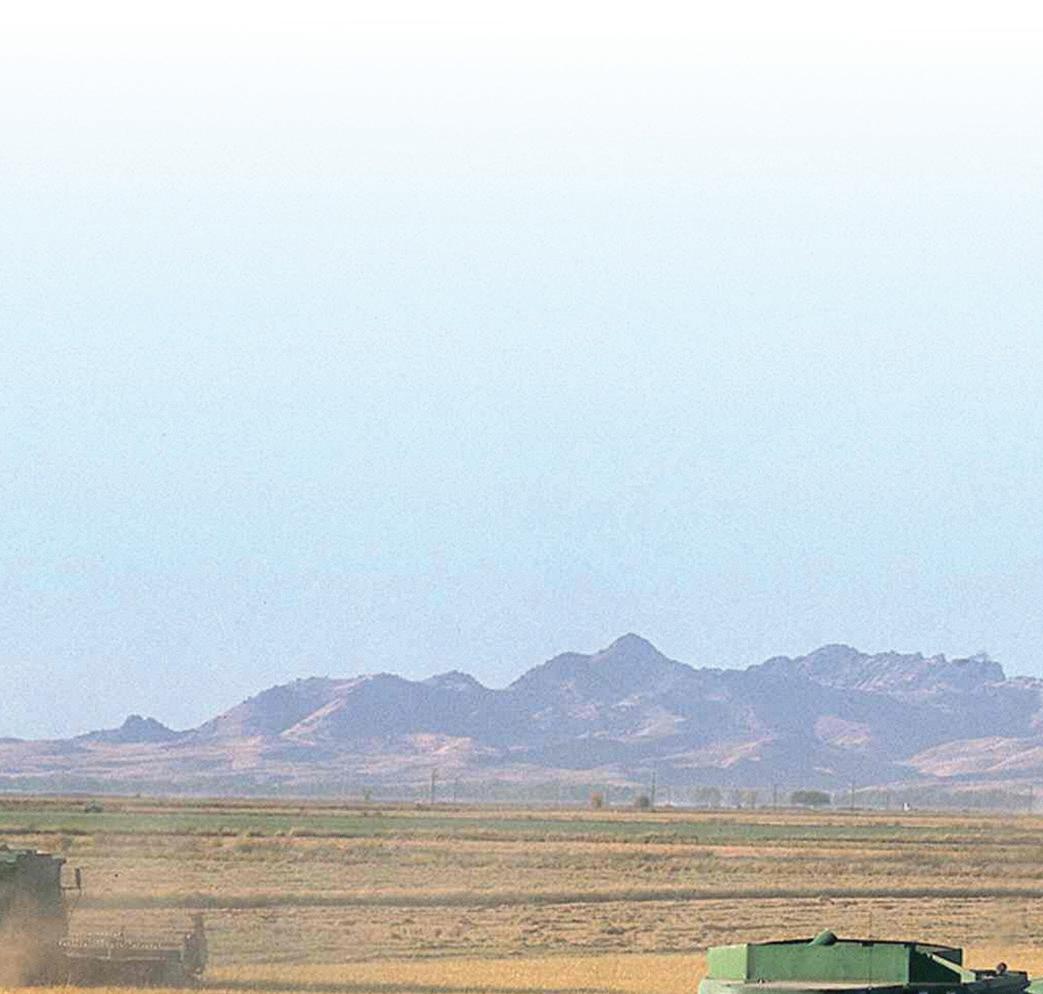
“ e measure’s scope is broader than advertised by its proponents because of the wide range of topics an employer is prohibited from talking to employees about, and the communication impacted by the bill might not be limited to employee meetings,” said Bryan Little, chief operating o cer of Farm Employers Labor Service and a senior director of policy advocacy for the California Farm Bureau.
Meanwhile, three new state laws a ect the way agricultural
workers can use paid and unpaid time o , giving workers more exibility and greater access to certain types of leave.
Under Assembly Bill 2123, authored by Assembly Member Diane Papan, D-San Mateo, employers can no longer require that employees use as much as two weeks of vacation time before taking paid family leave, the state funded program that partially replaces wages for workers who take time o to care for a family member or newborn child.
AB 2499, authored by Assembly Member Pilar Schiavo, D-Chatsworth, allows workers to use paid sick time to perform jury duty. It also allows employees to take protected unpaid leave if they or a family member are the victim of a “qualifying act of violence.” e leave must be related to at least one of several “prescribed purposes relating to” the act of violence.
SB 1105, authored by state Sen. Steve Padilla, D-San Diego, allows agricultural workers to use paid sick days to avoid working in hazardous conditions such as extreme heat, ooding, or wild re smoke. Extreme conditions would only trigger the new law if the weather event is declared a local or state emergency.
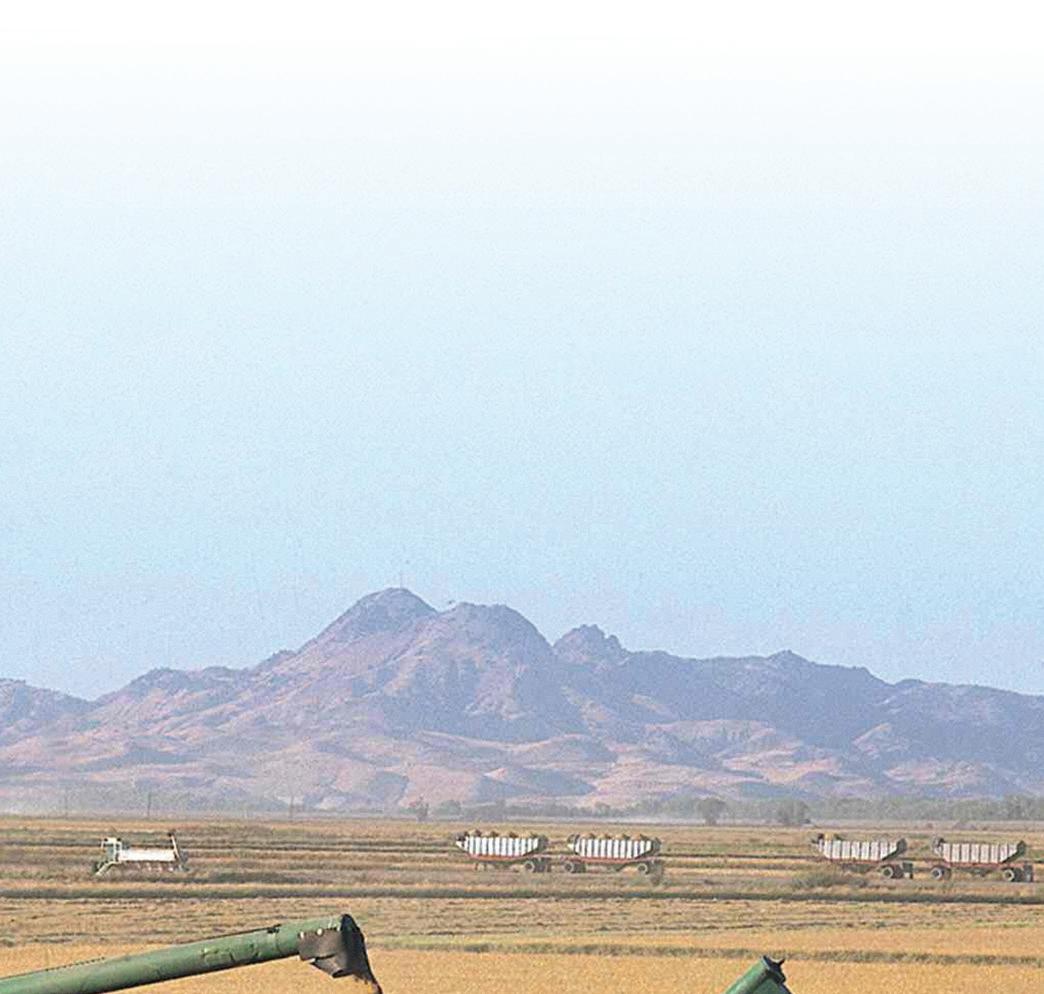
e new law, however, does not in practice require agricultural employers to make signi cant changes because employers were already not allowed to request proof from employees that paid sick leave was being used for the purposes authorized by paid sick leave laws.
As of Jan. 1, farm labor has become more expensive. At the federal level, farm employers who hire foreign guestworkers through
Continued on page 15







By Cassidy Nemec Editor
Down in Portageville, Missouri, the Fisher Delta research, extension and education Center (FDreeC) sits perched on upper Delta soils in the “bootheel” region of the southeastern part of the state.
The T.e. “Jake” Fisher Delta research, extension, and education Center (FD-reeC) was established in 1959 in Portageville, Missouri, to provide research and educational programs unique to the Southeast Delta region of the state and to function as a center for university programs, educational meetings, workshops, short courses, 4-H training, FFa Days and Field Days.
The FD-reeC facilities include 1,119 acres of land at five locations representing the major soil types of the region. research studies are designed to improve production of crops that are of major importance to the region; namely soybeans, cotton, rice, grain sorghum, wheat, peanuts, and possible new crops that could economically benefit the area. The land that comprises the facilities was donated to the university by families who strongly believed in the land grant mission. In 2011, the Center was renamed in honor of T.e. “Jake” Fisher, who had served as a superintendent and had been employed with the university of Missouri for more than 50 years.
as director of the research center, aaron brandt manages the center’s facilities, budget and resources to provide and promote an adequate agricultural research environment.
“We have six different research programs — Soil & Cropping Systems, rice agronomy, Crop Protection, Cotton agronomy, Weed Science, and Soybean breeding — plus my operations team, which is basically support staff for our faculty and research functions,” brandt said. “I am also the administrative link between our main campus in Columbia, Missouri, and the FD-reeC.

Four state Extension specialists who worked in conjunction with Brandt, all new to the Center as of 2021-2023, formed a group working to rejuvenate the FD-REEC. From left to right — Justin Calhoun, Bradley Wilson, Chase Floyd, Aaron Brandt, and Justin Chlapecka.
I work in conjunction with other reeC directors across the state on various projects, including grant applications.”
Four state extension specialists who work in conjunction with brandt, all new to the Center as of 2021-2023, form a group working to rejuvenate the FD-reeC.
Justin Calhoun is a former assistant professor and soil and cropping systems state
extension specialist.
“My program aids other specialists like Justin Chlapecka and bradley Wilson in conducting some research and extension work (mainly fertility, tillage, weed control and rotation studies) in rice and cotton, respectively,” Calhoun said. “but we also do extensive pest management, fertility, and basic agronomic work in crops that we do not have extension representation for here in the Delta region
of the state. This includes soybean, corn, peanut, grain sorghum, wheat, and industrial hemp.”
Justin Chlapecka worked as assistant professor and state rice extension specialist. He conducted research on best management practices in rice production, including cultivar trials, fertility, weed control, seeding rate, and other agronomic practices.
Chase Floyd is an assistant professor and state extension crop protection specialist for Missouri, covering entomology and plant pathology focus areas. He said he is in a unique position in the Missouri bootheel due to the responsibilities of entomological and pathological pest management of row crops.
“essentially, I am running both an extension entomology and pathology program,” he said. “Predominantly, my research focuses are in entomology due to my training as well as needs of the growers. Cotton and rice insects are where I spend a large amount of my research efforts.”
bradley Wilson is an assistant professor and state cotton extension specialist for the university of Missouri. “My main role is to provide timely and updated research information to producers in respect to variety selection, best management practices and updated technologies in cotton production,” he said. “I also have a role to establish relationships with cotton producers in Missouri and be available to answer calls and visit farms when the need arises.”
all of these specialists work as a unit year-round to maintain and improve the FD-reeC’s operations and research efforts.
Bootheel Rice
190,000 to 200,000 acres of rice is typical for the bootheel. Southeastern Missouri is home to the highest percentage of row rice acres across all six major rice-growing states, averaging about 30%-35% of total rice acres.
Chlapecka said that planting is a busy time at the FD-reeC.
“During planting, it seems that we are running in 1,000 different directions trying to get trials planted at two research and the various on-farm locations we have throughout Southeastern Missouri,” he said.
“We run about 5,000 small plots per year, which takes a large amount of time and preparation to get things ready before we ever go to the field. March turns into one of our busiest times trying to get everything ready. The bulk of our planting season is from late March through the first of May, but we do have some trials running from a late February planting date through mid-June.”
On the flip side, harvest poses its own challenges.
“Harvest can be a logistical nightmare at times as well, trying to get plot combines to the right locations at the right time, especially for our on-farm trials as we try to mesh up our schedules with the cooperating farm,” Chlapecka said.
He said they don’t do any plot desiccation, so harvest isn’t able to start until roughly 11 a.m., which causes some longer evenings when the time is right. “We try to stay extremely flexible during the harvest to allow us to get to everything timely and not put any of our cooperators behind.”

Chlapecka said they also had cultivar (variety) trials take up a large portion of their workload. They conduct those trials on their research stations, in their planting date trials, on-farm, and in both flood and furrow-irrigated systems.

as for the “in between,” Chlapecka said the summer between season focuses on farmer interests such as fertilization, herbicide application, irrigation, and data collection including stand counts, plant heights, tissue sampling, and other common data points. “The between time for the winter is filled with meetings and this can actually be one of our other busiest times, as I presented at something like 10 or 12 conferences last winter.”
The major weed issue, as is the same for much of the South, is barnyardgrass. according to Chlapecka, white margin sedge also seems to be spreading rapidly. “It’s not controlled by our most common herbicide programs and can dominate an area of the field and take it to the ground.”
He said insect pressure is not as heavy as other southern areas with warmer climates but that they do have some billbug issues due to the sheer number of row rice acres they have in the state.
“Disease is similar in that we don’t see as much as those who are further south,” Chlapecka said. “We still combat the same diseases such as sheath blight and blast, but not on the same level. blast also tends to not be a huge issue as we are around 70% hybrid rice.”
Chlapecka said there are many potential hybrids and varieties that can produce a successful rice crop in Missouri. “as far as varieties are concerned, generally the arkansas-bred lines perform better than Louisiana-bred lines, but that is not a hard and fast rule. The hybrids tend to do well in our
“My favorite part of the job is gathering research results at the end of the year. Harvest is a continual influx of data that either verify or refute our hypotheses for each test.”
area, especially when planted later because they’re earlier maturing than most of our inbred varieties.”
One of his favorite studies they researched during his last three years at the station was the seeding rate trial in furrow-irrigated rice.
“We rep those out at the top, middle, and bottom of the field with one hybrid and three inbred varieties to look at how we need to be seeding our row rice,” Chlapecka said. “The past couple of years have suggested that a slightly higher seeding rate is needed toward the top end where we aren’t backing up any floodwater, while the opposite has been true at the bottom of the field where it looks like we can get away with a lower seeding rate down there.”
He said they also had cultivar (variety) trials take up a large portion of their workload. They conduct those trials on their research stations, in their planting date trials, on-farm, and in both flood and furrow-irrigated systems.
Floyd confirmed the main insect issues in the region and his role in evaluating them.
“rice billbug is the main target pest of our program. Only gaining major pest status in the past few years, we are working with all our rice growing states to establish management guidelines to manage this pest.
additionally, we are evaluating the level of threat rice water weevil is in the bootheel, being the major early season rice pest in arkansas. We don’t have near the amount of population density, but we are evaluating a need to adjust our current strategies. Finally, we are looking at rice stink bug resistance to lambda-cyhalothrin. Our neighbors in arkansas are dealing with this issue annually. We are establishing how much resistance we have and alternate methods to keep this pest at bay.”
ultimately, Chlapecka enjoys seeing what harvest can bring.
“My favorite part of the job is gathering research results at the end of the year. Harvest is a continual influx of data that either verify or refute our hypotheses for each test. Harvest consists of some long days trying to get the plots out in a timely manner, but once harvest is complete at the end of the day, I’m ready to pull data and hop on the computer to see what the plot yields actually revealed to us. I geek out on running data when a day’s harvest is completed,” he said.
In terms of progress, much has been made over the past few years at the FD-reeC. Chlapecka, as the first specialist to arrive at Mu of the noted group, said he witnessed a lot of change.
“I’ve gotten to see a huge positive transformation in the atmosphere, facilities, and equipment.
The state legislature has been a huge supporter since my arrival (and the arrival of others), and we have been able to make some major upgrades to facilities including the main office. In addition, we have made a lot of equipment upgrades with that funding, which has allowed us to have modern equipment that was not here when I first started. So, I would say what started as major


challenges have actually turned into achievements and things we can brag about as a research center.”
One of brandt’s biggest achievements includes the planning and construction of the new “roy blunt Soil Testing and research Laboratory.” He said this facility will provide over 6,000 square feet of research space for soil, water and plant tissue testing, as well as provide space for their crop protection and rice agronomy programs. “This is the largest new construction project for the center in a very long time,” brandt said.
Calhoun shared his excitement for the project. “The soil testing lab has an extraordinary opportunity to impact agriculture in our part of the state. Currently, our ag community has to send soil, plant tissue, and water samples off to labs hours away for analysis.
“My hope is that this lab will be able to serve the community for fast and reliable results. rather than waiting even a couple of days for samples to arrive at a lab and be processed, I hope it will be able to provide near same day results and information,” he said.
In the short-term, brandt said his goals include finishing remodeling of existing facilities to meet current and future research needs.
“Long term, I want to ensure that the reeC continues operating at high standard and continue building upon its reputation,” he said. “We will need to be agile and adapt to the changing needs of our farmers and communities. I want the Center to continue growing and be at the forefront of agricultural research and innovation.
“In the next five years, I am looking forward to seeing all of the progress made by the team here, through research advancements, graduate student enrollment and contributions to the success of our farmers. We all have a shared vision of growing this research facility into one of the premier research facilities in the country, and I am excited to play a small part in that.”
More information on the Fisher Delta Research, Extension and Education Center and other Missouri agricultural experiment stations can be found at https://moaes.missouri.edu/.

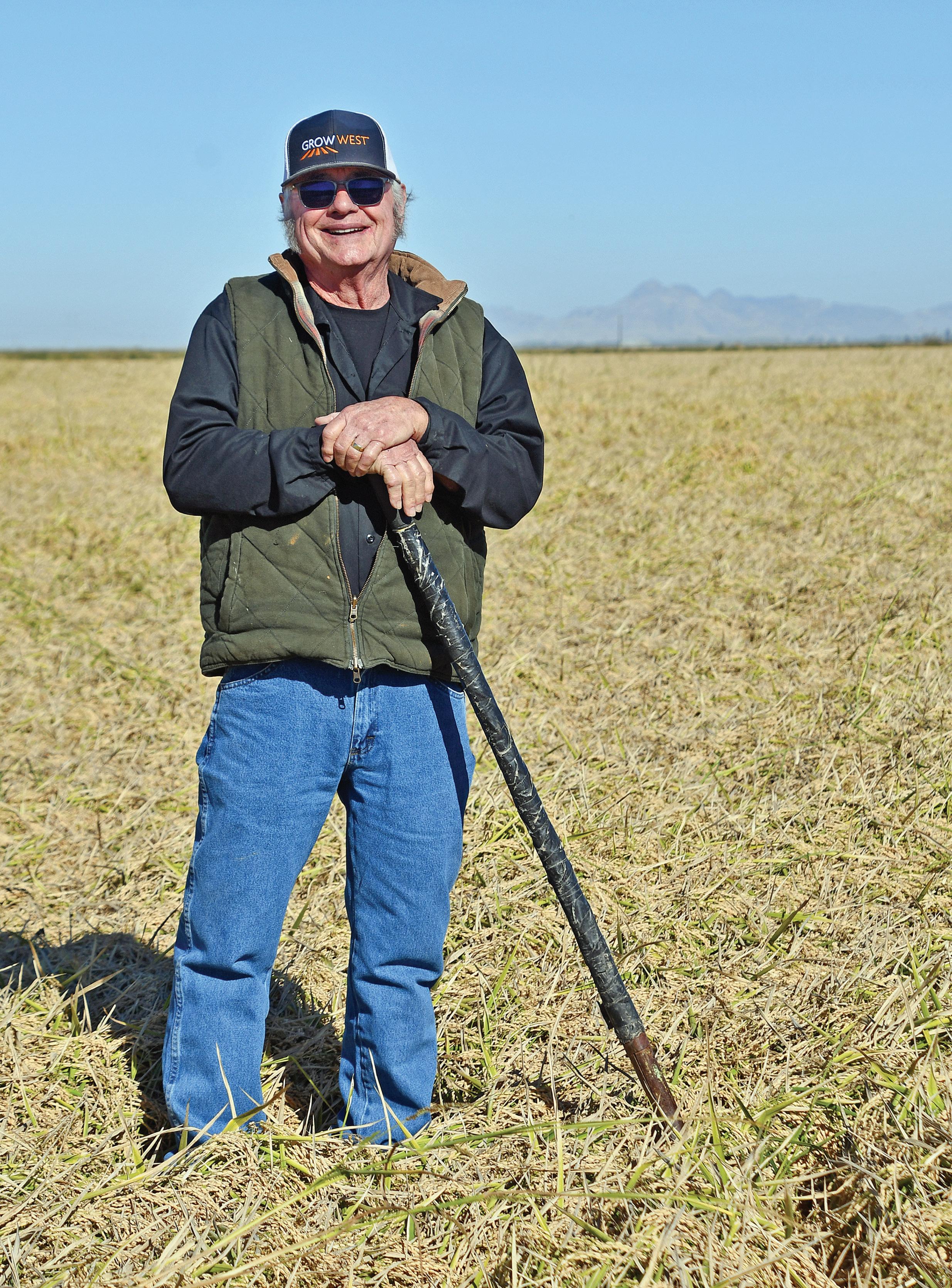















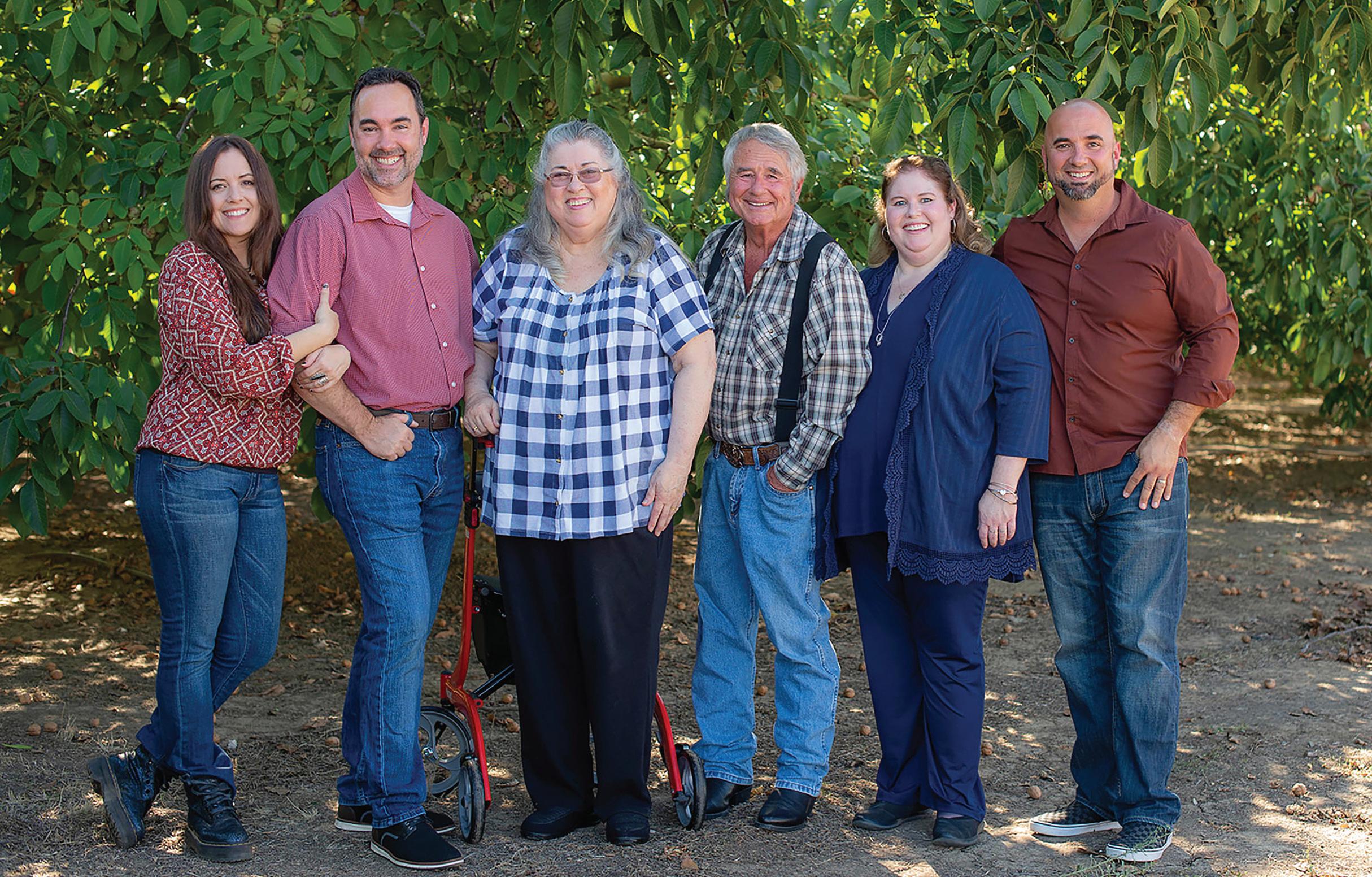
Gary Dodd didn’t have any agricultural roots to speak of. He was a single child of a father and mother, who both served in the United States Marine Corps, (his father a career Marine). Therefore, they moved around a lot. Dodd always enjoyed observing wildlife and is considered an amateur birdwatcher. When living in southern California, his biology teacher assigned a project in which each student took a plot of land and documented all aspects of the natural community over a year’s time. “When you study something carefully, you find most biological life — plants, insects, spiders — are small,” he said. “I learned to think small, and even today, I see things other people walk right by. To further my love of insects, I completed a degree in entomology at University of California, Davis that started my career in agriculture.”
Dodd’s summer job during his college years was working as a field scout for a major agricultural company. He learned to walk fields, looking for insect pests, diseases and other abnormalities, and then report back to his supervisor.
This was during the ’60s in California, “so I drove a little VW bug with a Ban DDT sticker on the back while checking fields.” he said. “I may have seemed like a typical hippie, but my life was out in the fields. My dad instilled a great work ethic in me, and I have always been willing to work hard and keep my conservative roots.”
Jim Imbach, another pest control adviser with the company, left in 1973. He and his wife, Beverly, started a full-service retail business, Growers Ag Service, in Dixon, California. In 1976, Dodd also left the company and partnered with Jim and started expanding their business. In 1980, they built another Growers Ag Service plant in Tudor, California, north of Sacramento, and south of Yuba City.
The Farmer Comes First
“I managed the Tudor store and consulted until Scott Evans took over, so I could focus full-time on my consulting,” Dodd said. “At the time, I worked with a wide range of field and row crops as well as a variety of tree crops.
“I was blessed that the farmers I worked with were exceptional and caring stewards of their farmland. My focus was resolving grower problems in all aspects of their operations. We always worked under the ‘get ‘er done’ philosophy, no matter what it took.”
Al Montna, California rice grower and owner of Montna Farms in Yuba City, has taken notice of the depth of Dodd’s knowledge and his strong desire to see his farmers succeed for more than 40 years.
“Since the early 1980s, Gary has been instrumental in ensuring the success of every rice crop we grow,” Montna said. “His deep understanding and hands-on approach have made a

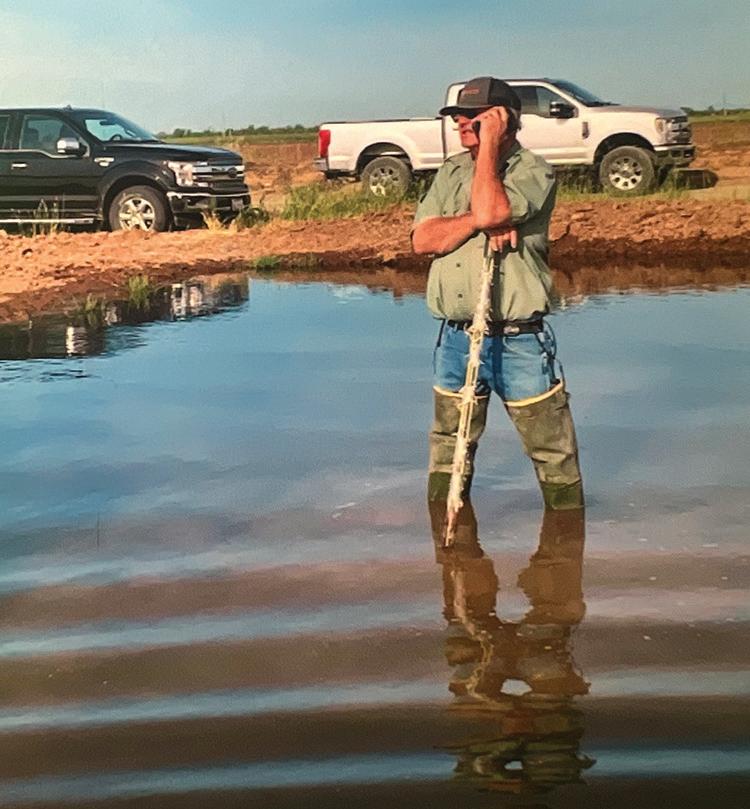
“For three months, we are going ‘full out boogie’ around here before it tapers off to a normal 14hour day,” said Grow West PCA Gary Dodd.
significant impact on our operations. Gary’s ability to navigate the vast changes in the rice industry, including new chemistries, varieties and resistance issues, has been remarkable to say the least.
“You could always find Gary with his hip boots on, walking the fields. We grow many different varieties and classes of rice, and Gary has become an expert and advises on each and every variety. His knowledge and advice have been crucial in our decision-making processes and overall success.”
For many years, Growers Ag Service continued to offer a full array of ag services while maintaining a trustworthy reputation in California’s rice industry. In 1999, the Tremont Group bought Growers Ag Service along with some other independent businesses. Although Tremont was a large retail outlet, they allowed the companies they bought to maintain their independent business names until about three years ago. At that time, all the stores were renamed Grow West.
“We are able to make our own decisions and maintain our business model,” Dodd said. “Les Lymon, CEO of Grow West, has always been a strong supporter, maintaining our ‘family values’ style of business and encouraging our continued growth. Jim has retired, but I still work for Grow West, and my son, Josh, does, too. Jim’s sons, Robert and Steve, also are on board. Today, Robert is the manager of the Dixon store.”
Scott Evans, Grow West North Valley retail division manager, said, “Gary’s dedication to his profession and his level of expertise are unmatched. I have had the pleasure of working with Gary for more than 30 years, and he has been a mentor to many newly hired pest control advisers and interns at Grow West. With nearly 50 years of experience, Gary has seen many unpredictable rice seasons and has always had the customers’ best interest at heart.”
While working side by side with the young people who are taking over his client base, Dodd always advises them not to

lose their character or integrity.
“Our goal is to solve the grower’s problems and make him successful,” he said. “It may involve pest management, cultural practices, economic concerns or a combination of them. The solution should be discussed with the grower, even if it’s something he doesn’t want to hear. In the years that I’ve been in the consulting business, I’ve had great people working around me. I’ve had great support. You can’t do something like this if you don’t have great people working with you.”
Grow West PCA Ian McCormack shared his impressions of Dodd after he started working with him in 2018 — a couple years after McCormack had entered the world of ag consulting.

“I was excited to be given the opportunity to work under Gary, knowing his level of expertise was top tier,” McCormack said. “I soon came to realize there was far more about Gary that made him an invaluable and irreplaceable adviser than just his expertise. He provided a level of service that was unparalleled by others.

Gary Dodd always liked riding cross-country with his Quarter Horse named Shilo.
wife and a fellow equestrian, enjoyed riding Pride — her Palomino.
“He made it his mission that no one would do more for his growers than he, and in doing so, he went above and beyond to give sound, site-specific, well-informed advice that allowed them to achieve high degrees of success. A lot of the success I experience out in the field is a direct result of learning from Gary how to do things right.”
In addition to championing his farmers, Dodd communicates with other PCAs, California university personnel and industry reps.
“I talk to all of these people,” Dodd said. “We are not a threat to one another. We are all just there doing what we need to do. You have to have boots in the rice field all the time.”
Paige Gill, territory manager at Corteva Agriscience, concurs with all the accolades given to Dodd by various members of the rice industry.
“I’ve had the privilege of working with Gary Dodd for five years as his Corteva rep,” she said. “His customers respect him for his hard work, dedication and the immense amount of professionalism he carries. Gary is truly at the top of his game.”
When asked what motivates him to give his best to carrying out his profession, Dodd said, “It’s just something about agriculture and growing crops that is so satisfying. My love of wildlife is still there also. I love seeing the otters, owls, bobcats and all the other critters that inhabit this back country farm-
Past Rice Consultant of the Year Award Recipients
2017 Robb Dedman, Rison, Arkansas
2018 Richard Costello, Oak Grove, Louisiana
2019 Cliff Mock, Alvin, Texas
2020 Amy Beth Dowdy, Dexter, Missouri
2021 BD Fontenot, Eunice, Louisiana
2022 Keith Shelton, Lonoke, Arkansas
2023 Rusty Elston, Cheneyville, Louisiana

■ Completed a Bachelor of Science degree in entomology at University of California, Davis.
■ Employed at a large agricultural company after graduating. In 1976, he joined Growers Ag Service, a full-service retail business.
■ In 1999, the Tremont Group bought Growers Ag Service and eventually changed the name to Grow West where Gary is a PCA today.
■ Consults full-time on rice mostly in Sutter, Yuba, Sacramento, Yolo and Colusa counties.
■ Served on Yuba City’s Unified School Board for 14 years.
■ Served as editor of the newspaper at University of California, Davis and was president of Theta XI fraternity.
Gary Dodd, son of Robert and Velma Dodd, moved around a lot early on because his parents served in the United States Marine Corps (his father a career Marine). Today, he and his wife, Lana, have been married 52 years and reside in Yuba City, California. They have four children — Heather, Jared, Marcie and Joshua — and nine grandchildren. Over the years, Gary’s hobbies have included horseback riding and coaching sport teams, such as basketball and soccer, in the fall. Today, he enjoys gardening at their home, loving on the grandkids and continuing to give his best e ort to Grow West.
land where farmers are growing rice. It feeds my soul, and that’s what gets me up every day.”
SB 1105 allows agricultural workers to use paid sick days to avoid working in hazardous conditions such as extreme heat, flooding, or wildfire smoke.

beginning March 2, late fees will begin to accrue.
the H-2a visa program must pay the workers a higher wage after the u.S. Department of Labor announced it was raising the adverse effect Wage right, or aeWr, for the program.
The aeWr is the minimum hourly rate for agricultural guestworkers. In California, the rate increased from $19.75 to $19.97, surpassed only by Hawaii’s wage rate for H-2a workers.
In November, California voters narrowly rejected a ballot proposition that would have raised the overall minimum hourly wage for all nonexempt employees in the state from $16 to $18. However, minimum wage in California still increased Jan. 1, rising to $16.50.
This is the first year that California’s agricultural overtime law, which was enacted in 2016, is completely phased in, with smallscale farmers joining other agricultural employers in being required to pay overtime to employees who work more than eight hours in a day or 40 hours in a week. according to a study by researchers at the university of California, berkeley, the agricultural overtime law has caused an overall loss in earnings for farmworkers due to employers restricting hours to avoid paying overtime.
There are new policies that affect the penalties the California State Water resources Control board can implement for unauthorized water diversions and late reporting. ab 460, authored by rebecca bauer-Kahan, D-Orinda, increased fines the SWb can impose for unauthorized diversions from $1,000 per day to $2,000 per day, while the penalty for failing to report flood flow diversions increased from $500 per day to $1,000 per day. The penalty for violating a curtailment order increased from $500 per day to $10,000 per day — a 20-fold increase — and $2,500 per acre-foot of water diverted. additionally, under a regulatory change by the SWb, water rights holders face new fees this year if they are late to report their annual water diversions, which must be submitted each year between Oct. 1 and Jan. 31. after a 30-day grace period this year,
Implementation of California’s Sustainable Groundwater Management act reaches a milestone this year. under the landmark legislation, the Department of Water resources will conduct periodic evaluations of the Groundwater Sustainability Plans submitted by Groundwater Sustainability agencies.
For GSas in critically overdrafted basins, the first five-year review of their plans will happen this year.
another law whose phase-in reaches completion this year, affecting small-scale farmers for the first time, is a near total ban on open agricultural burning in the eight counties in the San Joaquin Valley air Pollution Control District. The law, enacted in 2003 and postponed several times, aims to improve air quality in the San Joaquin Valley.
Open burning has long been the cheapest and easiest way to dispose of orchard and vineyard removals. In 2018, the air district launched a funding initiative called the alternative to Open ag burning Incentive Program, offering farmers grants to offset disposal costs. The program continues to accept applications, with higher compensation rates for smaller farms.
already in effect since October are new protections for an owl commonly found on California farms. The California Fish and Game Commission listed the Western burrowing owl as a candidate for threatened species status. burrowing owls live in grasslands, deserts, and agricultural lands across California. as a candidate species, under state law the burrowing owl is afforded the same protections as a threatened species. They cannot be “taken,” meaning killed or captured, although the California Fish and Game Code provides a take exemption for routine and ongoing agricultural activities. When an accidental take occurs, it must be reported to the California Department of Fish and Wildlife within 10 days.
Caleb Hampton is an assistant editor of Ag Alert. He may be contacted at champton@cfbf.com.
By John Lovett
Rice plants can deal with the heat during the day, but when the sun goes down, they need to chill out.
Developing rice with tolerance to higher nighttime temperatures has become a focus for rice breeders because studies are showing nights are getting warmer in the largest rice-growing regions.
Half of the rice grown in the united States comes out of arkansas, mostly from the Delta. arkansas has been home to about 1.4 million acres planted in the grain that serves a staple food for more than half of the world’s population, according to the u.S. Department of agriculture economic research Service.
“rice breeders have tried to incorporate tolerance genes into the background of arkansas rice, which is not an easy task,” said Vibha Srivastava, professor of plant biotechnology in the crop, soil, and environmental sciences department for the university of arkansas System Division of agriculture. “They have just started to scratch the surface in that area, but they’re making good headway. Some promising updates are there.”
However, Srivastava said there may be another way forward — gene editing, which is different from genetic modification because it does not insert DNa sequences from other organisms, she explained.
Srivastava explores the topic of breeding rice and the potential for gene editing to tolerate night heat in the December issue of Current Opinion in Plant biology with an article titled “beat the heat: breeding, genomics, and gene editing for high nighttime temperature tolerance in rice.”
Her co-authors of the article were Christian De Guzman, assistant professor of rice breeding and genetics, and Samual b. Fernandes, assistant professor of agricultural statistics and quantitative genetics, both researchers with the arkansas agricultural experiment Station, the research arm of
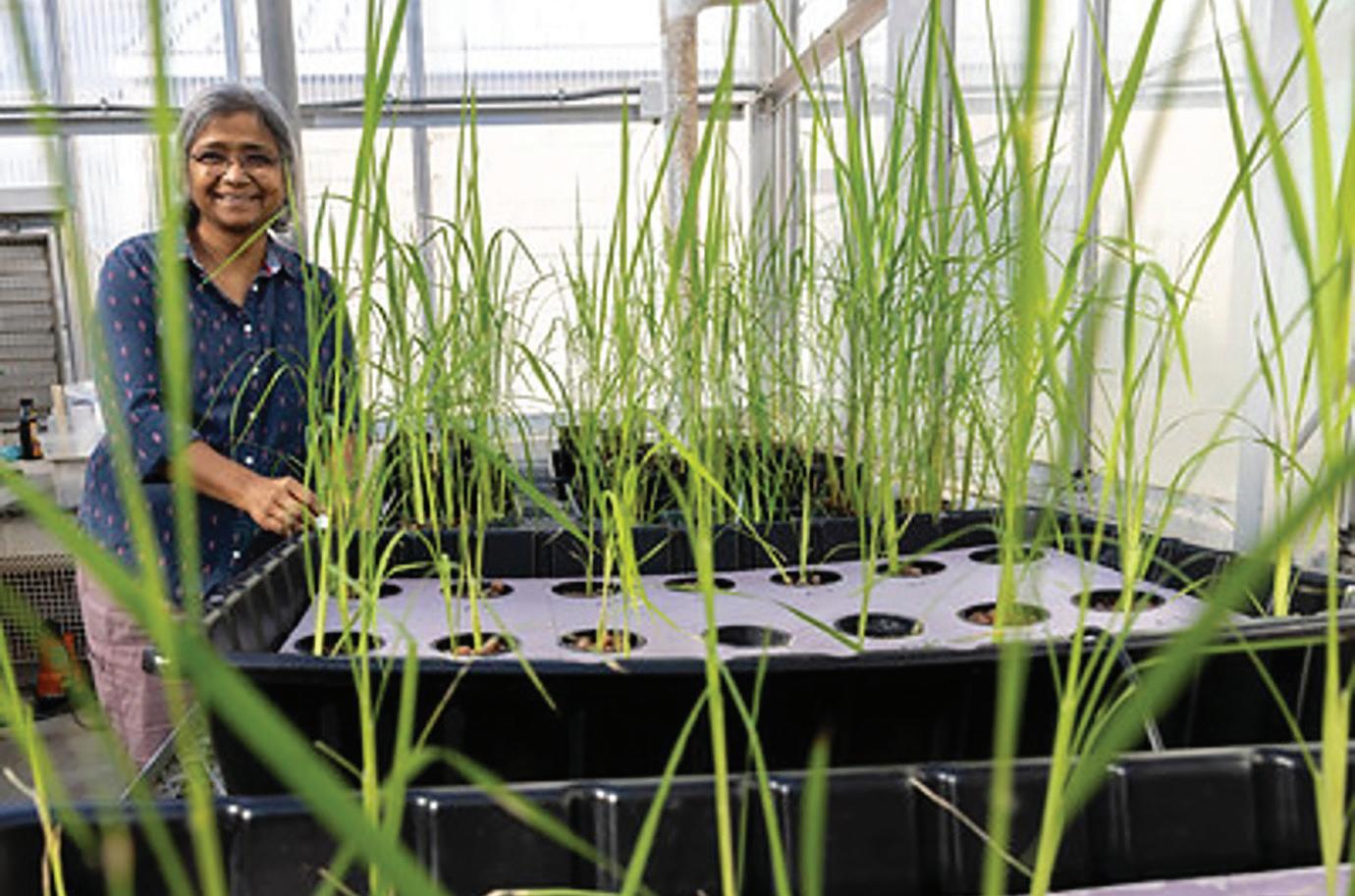
As nighttime temperatures increase in rice-growing regions like Arkansas, Vibha Srivastava, professor of plant biotechnology in the crop, soil, and environmental sciences department, points to gene editing to help develop varieties with higher temperature tolerance.
the university of arkansas System Division of agriculture.
It is the first review article about high nighttime tolerance in rice to their knowledge, gathering all the available scientific literature on the subject in one place.
Srivastava said there has also been information on the subject published in the b.r. Wells rice research Series with studies led by Paul Counce, professor of rice physiology at the rice research and extension Center, on screening rice for responses to high nighttime temperature, susceptibility, or tolerance.
De Guzman, Fernandes, and Srivastava were awarded a four-year, $585,650 grant by the u.S. Department of agriculture to breed rice for high nighttime tolerance. The Current Opinion in Plant biology article expounds on the information gathered for the grant proposal.
When rice is in its flowering and
grain-filling stages, it is more sensitive to high nighttime temperatures than high daytime temperatures. The optimum rice growing temperatures vary globally, but the authors point out that most rice varieties show sensitivity to nighttime temperatures above 28 degrees Celsius, or 82.4 degrees Fahrenheit.
The higher temperatures lead to yield losses and grain quality decline expressed as “chalkiness,” an undesirable characteristic that impacts milling quality, cooking quality, and palatability.
based on recent studies, the authors noted that the results of high nighttime stress can lead up to a 90% loss in grain yield and a significant increase in chalkiness.
Srivastava said the genetic mechanisms of high nighttime stress susceptibility are not clear, but they know that an elevated respiration rate during high nighttime temperatures diverts energy from growth to repair and impacts the formation of biomass.
While there are no known modern cultivars bred in the United States that can withstand exposure to high nighttime temperatures during the reproductive stage, an Indian variety called Nagina 22 o ers high nighttime tolerance. However, when grown in eld conditions in Arkansas it showed some undesirable traits like small grain size, chalkiness, and tall stalks susceptible to falling over, known as lodging.
Nagina 22 has been used in crosses with modern cultivars to get the high nighttime tolerance, but the genes have not been cloned. Without gene identity, the application of gene editing to improve the traits of popular cultivars is impossible, Srivastava said. In the meantime, she points to gene editing as another way to improve desirable traits in Nagina 22, or in crosses with Nagina 22.
A few advanced breeding lines in the Arkansas Rice Breeding Program could be candidates for gene editing if they show improved traits related to yield and grain chalkiness a er high nighttime stress.
A critical consideration with Nagina 22 and its derivative lines, however, is to im-

prove its naturally high grain chalkiness.
Cloning and analysis of Chalk5, a major chalk region of DNA in rice, opens a route to reducing chalkiness by gene editing, she noted.
“Our goal is to get more production and more avorful taste when it comes to rice, but quality of the grain is important,” Srivastava said.
National and regional studies indicate a nighttime warming trend in the United States. According to the Fi h National Climate Assessment released in 2023,
Vibha Srivastava holds grains of rice from a wild variety, left, and a variety under development to tolerate higher nighttime temperatures.
“nighttime temperatures and winter temperatures have warmed more rapidly than daytime and summer temperatures.”
A 2021 study with input from researchers at Arkansas State University and the U.S. Department of Agriculture-Agricultural Research Service’s Delta Water Management Research Unit in Jonesboro showed an increase of about one degree Fahrenheit (0.53 Celsius) in Arkansas’s seasonal night air temperature between 1940 and 2018. e study was titled “Signi cant Shi of Ambient Night-Time Air Temperature during Rice Growing Season in Major US Rice States.”

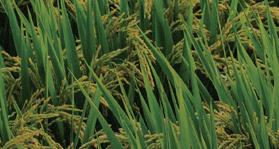



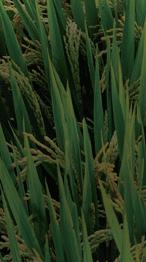









With a unique Group 12 mode of action, Brake® provides exceptional residual control in furrow-irrigated rice, targeting tough weeds like hemp sesbania, crabgrass, and Palmer amaranth.



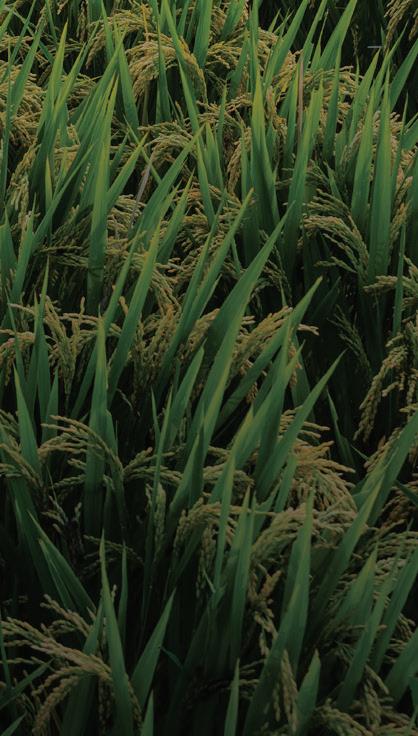
recently, el Campo, Texas, was the place to be for the Western rice belt Production Conference, inside the warm and dry el Campo Civic Center. rainy weather didn’t hinder growers and sponsors alike from across south Texas from gathering and gearing up for the upcoming planting season. also in attendance were uSa rice staffers Jamison Cruce, vice president of government affairs; Kane Webb, director of field services; and Dr. Steve Linscombe, director of both The rice Foundation and the rice Leadership Development Program.
ralph Novosad, chair of the planning committee welcomed everyone and turned the program over to Corrie bowen to guide the group through the agenda of presentations. Multiple topics of interest were discussed, beginning with Paul Goetze’s presentation on kernel smut research, current events in rice production from Dr. Sam rustom, and new herbicide technology in rice with Dr. Connor Webster.
as important as the ongoing research, the group also received an update from Kelly Payne, vice president of water operations for the Lower Colorado river authority (LCra), on water availability and pricing, an increasingly critical aspect of production for many south Texas growers. Other presentations covered Natural resource Conservation Service (NrCS) conservation programs, unmanned aerial vehicle (uaV) pesticide applications, and the Texas a&M rice Water Smart Project.
During the luncheon, winners of the rice Poster Contest were recognized, chosen from more than 90 submissions from area students. Tommy Turner gave the Texas rice Council report and uSa rice’s Cruce addressed the group and answered questions on the recent american relief act provisions, the work being done in Washington, DC, by uSa rice as focus shifts to the new administration, and getting a meaningful Farm bill passed with the new Congress.
“as member of the planning committee, I was very pleased with the attendance and the producers’ attention given to the speakers,” said Daniel b erglund, a rice farmer from Wharton, Texas. “It was also a very good opportunity for producers to visit and share some of their thoughts and concerns going into the 2025 crop year.”
Dr. Natalie Graff with Texas a&M’s agricultural and Food Policy Center echoed many of the points made by Cruce in her Farm Policy update, and shared charts highlighting the areas where essential improvements for the rice industry need to be directed for a more secure future for rice growers.
The event was a great success – well attended, well sponsored, and well fed, Texas style!
— Shelby Young
Nutrien ag Solutions is excited to announce a collaboration with Mossy Oak, along with their conservation arm, the GameKeepers. Mossy Oak is recognized in the outdoor lifestyle community for their dedication to land stewardship, conservation, and love of wildlife. Together, they are united in working toward a shared goal to care for the land and create a lasting legacy for

future generations. This collaboration underscores their focus on our farmers’ sustainable agricultural practices and conservation efforts, aiming to educate and inspire communities engaged with farming and the outdoors.
Nutrien ag Solutions has been a trusted partner to farmers since 1983, offering agronomic solutions that drive growth and assist in preserving the land for future farmers. With over 2,000 selling locations globally, and over 4,000 crop consultants, they provide knowledge and access to a wide range of products and services tailored to each farm’s unique needs.
Founded in 1986, Mossy Oak has established itself as a leader in conservation, known for its innovative camouflage designs and dedication to hunting and land stewardship. Central to this mission is the Gamekeepers of Mossy Oak, a brand that unites sportsmen around shared values of wildlife and land conservation. Like Mossy Oak, Nutrien ag Solutions shares a commitment to balancing today’s harvests with helping growers maintain the land’s long-term health and productivity.
This collaboration is an opportunity to showcase commitment to farming and conservation, spreading a message to all that are passionate about the land.
“by working with the GameKeepers, we have the opportunity to tell our story of conservation in a way that resonates with those that share a passion for both hunting and farming,” said brian Knifong, head of marketing for Nutrien ag Solutions. “Together we’re celebrating the advancements farmers use to produce high-quality crops, while helping farmers maintain the land for future generations.”
Together, Nutrien ag Solutions and the GameKeepers of Mossy Oak will highlight how modern production agriculture is evolving and the efforts driving innovation in the industry.
as Mossy Oak’s and the GameKeepers preferred agricultural retailer, Nutrien ag Solutions will provide valuable agronomic insights to the Mossy Oak community. Nutrien ag Solutions will advise on sustainable farming practices, including water management, soil health, and crop nutrition, helping outdoor enthusiasts better understand agriculture’s vital role in conservation.
“as two organizations deeply rooted in conservation, we’re excited to work together to inspire farmers and outdoor enthusiasts to continue caring for the land,” said bobby Cole of Mossy Oak GameKeepers. “Through this collaboration, we hope to provide a clearer, more transparent view of agriculture’s role in sustainability, showing that farmers are not just feeding the world – they’re doing so in ways that protect the land and its future. Through the Gamekeepers television show, magazine, and podcasts, we want the experts at Nutrien ag Solutions to teach us the latest farming technology and learn how to apply it to farming for wildlife.”

DR. JARROD T. HARDKE ARKANSAS
Professor/Rice Extension Agronomist
University of Arkansas System Division of Agriculture
jhardke@uada.edu
e saying goes, “a ¼ tank is better than an empty tank.” at’s going to be very appropriate for the 2025 growing season. In a year where nothing really pencils out, it’s going to be tempting to strip this machine down to the frame to skin a pro t.
Fertility is always a tough area to talk about cuts and adjustments, but this year, everything has to be under the microscope.
In rice, nitrogen is front and center. Most of our N rate recommendations are already aimed at optimization and don’t leave room for reductions. Stay the course there and maximize e ciency by treating urea with an NBPT product.
For varieties, consider going with a single pre- ood N application (rather than a two-way split) where you can ood quickly and maintain an initial ood for three weeks. is can help us save on total N applied. For hybrids, there isn’t really anything to change — our yield goals are met by our pre- ood apps with the additional N at late boot providing a small yield bump while improving
milling and standability.
Zinc, while not required in large amounts, is crucial in rice production. Don’t skimp here — where a soil test calls for it, we need to apply Zn sulfate in our pre-plant mix, which prevents de ciencies and builds soil test levels. If forced to use a foliar Zn product in-season, it will cost as much without increasing soil test levels. Granular Zn provides more bang for the buck.
For phosphorus, we can get away with lowering rates in many situations, but we don’t need to completely omit recommended applications. On soils with pH greater than 7 and in the Low or Very Low soil test categories, do not reduce rates.
Potassium gives us the most exibility. We know that we can reduce rates in the short-term and have a safety net of tissue sampling in-season and applying additional K then if needed. We recommend using the Potash Rate Calculator (https://agribusiness. uark.edu/decision-support-so ware.php) to ne-tune our K fertilization program.
At the end of the day, an 0-30-60 can take care of a lot of acres from a P and K standpoint. Remember that for most nutrients, we don’t yet have reliable tissue sample recommendations for managing the crop in-season (K is the exception). For nutrients other than K, tissue sampling is still primarily a diagnostic tool — it helps identify an issue or isolate a de ciency but isn’t a good predictor of yield-limiting nutrient levels that would bene t from an additional in-season nutrient application.
Make smart adjustments in 2025. Reducing rates is one thing,











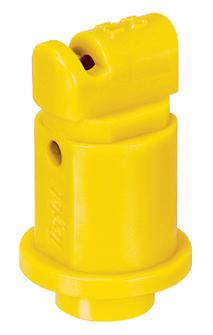











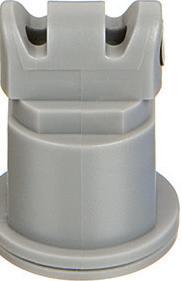
















but omitting recommended fertility entirely is risky. We can save money if we choose wisely, but there is still a certain degree of “spending money to make money” that has to occur with our fertility program. Let us know if we can help.

Assistant Professor and Extension Agronomist
Texas A&M AgriLife Research and Extension
sam.rustom@ag.tamu.edu
The day finally arrived where a former rice weed scientist turned extension specialist has been asked to write a fertility article. admittedly, not a whole lot has changed from a nitrogen-management standpoint in Texas in recent years. One thing that’s different down here is we tend to use less mid-season nitrogen than most of the other rice-growing areas of the country to minimize kernel smut issues later in the season.
We had no shortage of rain prior to permanent flooding in 2024, with the majority of that falling in april and May. unfortunately, our pre-flood urea was going out on a large portion of acres during the same timeframe. I immediately thought back to my days at Louisiana State university when Dr. Dustin Harrell would have demonstration plots each year showcasing nitrogen losses when urea was applied on muddy ground, versus dry ground, versus flooded ground. That is where I first learned of urease inhibitors and have been a believer ever since.
urease inhibitors like agrotain are urea coatings that slow down urease enzyme activity and protect your nitrogen investment. urease is the enzyme responsible for the breakdown of the NH4+ our rice loves to NH3, which is lost as a gas and ultimately unavailable to rice. research has suggested that up to 24% of the nitrogen you paid for can be lost due to ammonia volitization, compared with a 5%-6% loss when treated with agrotain. This is especially true when conditions are less than ideal, such as damp or muddy ground like we had in 2024, which can rapidly speed up the volatilization process.
In addition to muddy ground, urease inhibitors are just as beneficial on dry ground in situations where flooding might be delayed after urea is applied or in those larger fields that are just too big to flood up quickly. The more days you wait, the more nitrogen will be lost; however, if the field can be flooded within a day or two, agrotain is probably not needed. according to LSu, if you can’t get the water to it on dry ground in three to five days after urea is applied, use a urease inhibitor. If a weed scientist is going to write his thoughts on fertilizer, he better write at least a little bit about herbicide-coated fertilizer. In my final few years at LSu, a fellow grad student was revisiting herbicide-coated urea for a couple of new products. In this day and age, we are looking for any way to cut costs without jeopardizing yield, and impregnating fertilizer for certain applications can help. These applications are typically safer on rice, less prone to off target move-
ment, and can save the grower an additional trip over the field. Novixid is a relatively new product from Corteva and is a great candidate for fertilizer impregnation. For those who don’t know, Novixid is a pre-packaged mixture of Loyant and Grasp. These applications, like others mentioned, are also situational and aren’t necessarily something I would recommend blanketing the world with. at minimum, you want at least 150 pounds per acre of fertilizer going out. Second, you want your weeds to be four inches or less. Typical weeds controlled by this application are rice flatsedge, yellow nutsedge, alligatorweed, ducksalad, and other aquatic/semi-aquatic species. additionally, these treatments work best when weeds are 70% submerged or more, so applications will be directly into the floodwater. Please consult the label for additional instructions and weeds controlled or suppressed.
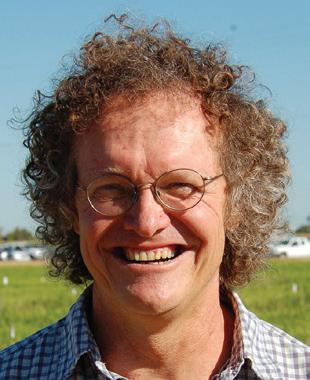
DR. BRUCE LINQUIST
UCCE Rice Specialist balinquist@ucdavis.edu
I have had a couple of calls already this year asking how to reduce fertilizer costs. I believe these questions are largely related to low rice prices and growers wanting to reduce input costs. Here are a few strategies to help reduce fertilizer input costs.
If you routinely apply top-dress nitrogen, consider applying all the N you would normally apply as a top-dress as aqua-N before planting. We have done a lot of research on this, and we have seen no benefit of splitting the total N rate. If fields remain flooded early in the season, all this N is efficiently used. This saves cost as aqua-N is a cheaper N source than ammonium sulfate (typical top-dress N source). also, you avoid the airplane costs associated with topdressing. I am often asked about the benefits of the sulfur in ammonium sulfate. While we are adding S, I have never seen sulfur-deficient rice in California, and our soil and plant S concentrations have always been above critical levels.
Was your field fallow last year? For the past four years, we have been doing research at the rice experiment Station on how to manage N fertilizer in a rice field when the previous year’s rice was in fallow. I have written about our findings more extensively in previous articles. The bottom line is that there is more soil N available from fields that were fallowed the previous year. Thus, if you have a field coming out of fallow (and it had been in rice prior to that), you can reduce your N fertility rates. Our research shows that rates can be reduced by 20-40 pounds of N per acre.
Importantly, for both above strategies, it is important to keep a close eye on the crop around panicle initiation (40-45 days after planting) to see if it is displaying any signs of N deficiency. This can be done with Leaf Color Charts, a Green Seeker, or plant analysis — all of which have been discussed before. If the crop is showing signs of deficiency, apply N.
Finally, test your soil. you may not need to apply phosphorus (P) and potassium (K) fertilizer. I recommend applying a balanced fertility program that balances the P and K removed from
the field in harvested grain (and maybe straw) with what is applied as fertilizer. This is especially the case when soil tests are not used as it ensures an adequate supply of these nutrients. However, a decision can be based on a soil test. If your soil P levels are above 12 ppm (Olsen P/soil bicarbonate test), consider not applying P as these soil P levels are adequate. Similarly, if your soil K levels are above 120 ppm, you may not need to apply K fertilizer. In areas on the east side of valley, especially the red soils, higher soil K levels may be necessary.

DR. RONNIE LEVY LOUISIANA
Extension Rice Specialist Louisiana State University RLevy@agcenter.lsu.edu
Phosphorus is a constituent of nucleic acids and is needed for several plant-essential processes including photosynthesis, respiration, energy storage, and energy transfer among others. rice removes P from the soil as an orthophosphate ion, primarily H2PO4- or HPO4-2. Fertilizer P is always expressed as a percent P2O5 equivalent and on a fertilizer label is located as the second number (example: 0-46-0).
Soil test P and soil-test-based fertilizer recommendations can be reported as either P2O5 equivalent or P. Convert P to P2O5 equivalent by dividing by 0.44. Convert P2O5 equivalent to P by multiplying by 0.44. Soil P is most available to plants in soils with a pH around 6.5. Typically, plant-available P is decreased as a soil becomes more acidic or alkaline. When a rice soil is flooded and becomes anaerobic (no oxygen), the pH of the soil migrates towards neutrality over time regardless of the initial pH; therefore, in most cases, P becomes more available to rice after permanent
flood establishment.
rice takes up approximately 0.0086 pounds of P2O5 (0.02 pounds of P) per pound of dry rice harvested. approximately 75% of the P taken up is contained in the harvested grain. usesoil-test based fertilizer recommendations: LSu agCenter’s Soil Testing and Plant analysis Laboratory uses the Mehlich-3 soil test extraction to extract P and determine fertilizer needs. Soil test results are given in ppm of extractable P, while fertilizer recommendations are given in pounds of P2O5 per acre. Phosphorus fertilizer rates should be determined from a recent soil test.
Phosphorus fertilizer is most efficient in rice production when applied just before planting until permanent flood establishment (fifth leaf to first tiller). research has shown that P fertilizer applications after this time (often referred to as “rescue” applications) are beneficial; however, yields will be reduced as compared to earlier P application timings. recent research with ratoon rice production in Louisiana has shown that an additional 30 pounds of P2O5 was needed to maximize ratoon yields from a soil testing low in extractable P. The additional 30 pounds can be included with the first crop application or applied immediately after first crop harvest prior to reflooding. Phosphate fertilizers are commonly blended with potassium and nitrogen fertilizers to provide site-specific fertilizer needs of the producer. Commonly used P fertilizer sources in rice include: triple superphosphate (0-46-0), diammonium phosphate (18-46-0), monoammonium phosphate (11-53-0), and Microessentials SZ (12-40-0-10S-1Zn).
Nutrient deficiency symptoms of phosphorus appear when a plant becomes deficient in P. Phosphorus is mobile in the plant and will translocate from the older (lower) leaves into the newer (upper) leaves. Symptoms include stunted plants with slender stems while leaves tend to have a very dark green color that stand erect. Phosphorus deficiencies also result in reduced tillering and slower development of the plant with necrosis (death) of leaves beginning with the oldest leaves.
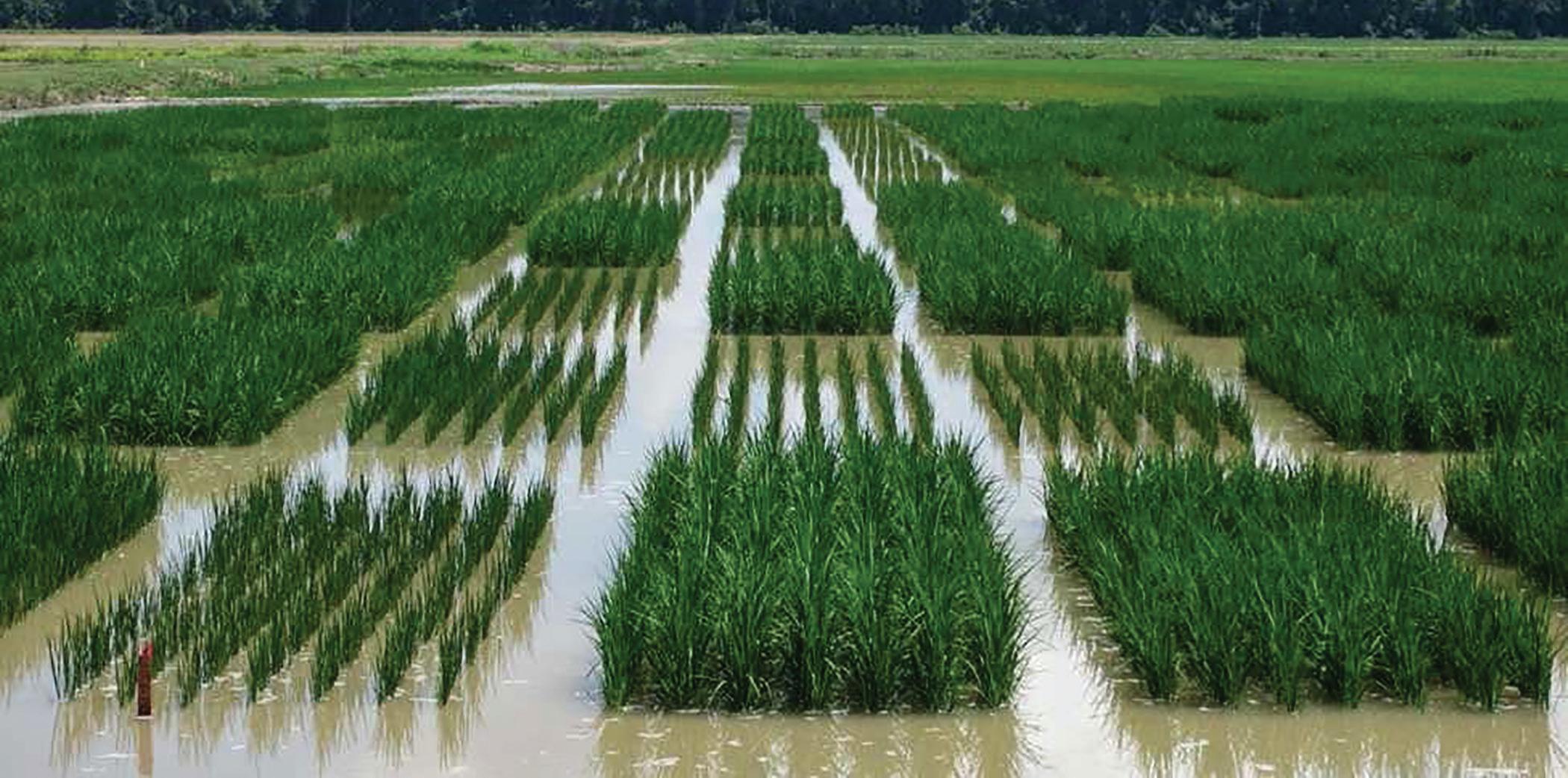

Growing up across three east arkansas counties, St. Francis, Monroe, and arkansas, significantly shaped who I am. as a little girl, I watched my father have a deep appreciation of the outdoors, and anything that involved rice farming. Our father-daughter dates included spray rig rides, checking rice water, and hunting adventures. as I grew up along with the crops, I continued to be blessed by people with a connection to agriculture. However, I didn’t understand the significance of it all; to be frank, I thought the world had so much more to offer other than playing in the dirt.
“Never say never...” as a freshman walking across campus, I had the mindset like many others around me; “I’ll never go back”. Well, you know how the saying goes… I found myself wondering down the halls of the Crop, Soil, and environmental Science Department one day in Fayetteville. It finally hit me; I was homesick. Soon enough, my major changed to crop science, and my world seemed to make a little more sense. a great foundation was building after spending a summer working with the rice agronomy Program led by Dr. Jarrod Hardke.
soybean, and wheat. Looking back, of course, the Holy Spirit knew I’d need to be “well-rounded” as my thesis advisor put it. The confidence and strength I gained within this program was second to none. I felt blessed to be able to live in my college town, work a job I enjoyed, and get to visit my east arkansas family frequently due to work travel. at this point, I’d pretty much let the door be closed on work in the rice industry.
“Wandering far don’t mean you’re lost.”
“It would require an entire book to thank all the people who’ve shaped me into the person I am today, but know I’m eternally grateful for them all.”
“What do you mean, no rice project?”
I found myself in a major dilemma of picking between two similar graduate programs, and two professors I had the highest respect for. a decision was made; I met with my advising professor to discuss research projects; not knowing that a rice one wouldn’t be on the table. My heart racing, with a million things running through my head, I repeated, “So, rice isn’t an option,” to which he replied, “this way you can be well-rounded.” The Lord knew I couldn’t make that decision for myself. I’m forever indebted to Dr. Trenton roberts for that push. I began studying the Nitrogen use efficiency of Pre-Tassel applications in Corn.
The Soil Fertility Program greatly prepared me for when I stepped on as a new member to the arkansas Crop Variety Improvement Program (aCVIP). My duties started with the variety testing sector, covering four crops: grain sorghum, corn,
The aCVIP began assisting with some roles in the Foundation Seed Program while preparing for the retirement of that program director. My director came to me to see if I had any interest in taking on new duties; it was one of the easiest “yes”s I could give. The team granted me permission to spend the 2023 summer in Stuttgart while continuing variety testing duties and walking foundation rice fields. The more time I spent wandering up and down rogueing lanes, the less lost I felt. With many prayers and lots of “just be still” whispers, the opportunity presented itself for me to step into a new role as a “Field Specialist in agronomy,” located in the bootheel of Missouri, where the other half of my heart was located, too. I was already frequenting the area because my now husband was the state extension rice specialist. To prepare for the interview, I brainstormed program ideas that would benefit the growers in southeast Missouri region. I recalled a conversation about the arkansas Verification Programs, which are designed to verify university agronomic recommendations on enrolled fields to ensure growers are obtaining optimal yields and maintaining crop profitability.
The first year of the Missouri rice Verification Program had three fields enrolled within the Stoddard and Mississippi counties. Turns out the door didn’t close after all. The summer weeks allow me to call my dad to give updates on how the rice looks. a lot of mine and Justin’s dinner conversations revolve around rice farming. It would require an entire book to thank all the people who’ve shaped me into the person I am today, but know I’m eternally grateful for them all.
In January 2025, I began a new chapter in the rice industry with Horizon ag, LLC as a district field representative covering Northeast arkansas and Missouri. I’m looking forward to growing in my career and looking for areas to better serve the industry.
—
Robyn Chlapecka, Northeast Arkansas/Missouri
Rice Farming’s My Turn column is devoted to telling unusual “farm tales” or timely stories from individuals in the rice industry. Now it’s your turn. If you’ve got an interesting story to tell, send a short summary to cnemec@onegrower.com. We look forward to hearing from you.






















